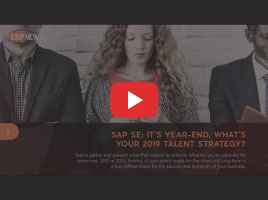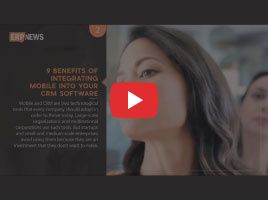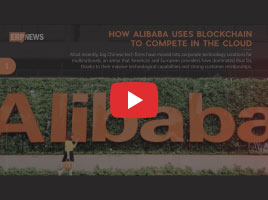Here is the Top 5 ERP News of the week, Dec 24th.
- Is Your ERP Agile Enough for 4IR?
- 10 Ways to Improve Cloud ERP with AI and Machine Learning
- 5 Ways to Increase RoI from ERP Implementation
- Keys to Mastering the 5 Main Saas ERP Subscription Models
- SAP Enterprise Asset Management Targets IIoT Data
Is Your ERP Agile Enough for 4IR?
One of the first decisions you have to make, once you’ve decided on which enterprise resource planning (ERP) system to implement, is how you will implement it. Essential to the character of any ERP system is its fairly regimented set of steps to be followed, which is necessary for successful implementation. While the final destination may be clear, the choice of route will be determined by a combination of factors such as time-frame, cost and business culture. Successfully charting the course for your ERP implementation will require that you decide upfront between two possible (routes) options: a waterfall methodology or agile development.
10 Ways to Improve Cloud ERP with AI and Machine Learning
Capitalizing on new digital business models and the growth opportunities they provide are forcing companies to re-evaluate ERP’s role. Made inflexible by years of customization, legacy ERP systems aren’t delivering what digital business models need today to scale and grow. Legacy ERP systems were purpose-built to excel at production consistency first at the expense of flexibility and responsiveness to customers’ changing requirements. By taking a business case-based approach to integrating Artificial Intelligence (AI) and machine learning into their platforms, Cloud ERP providers can fill the gap legacy ERP systems can’t.
5 Ways to Increase RoI from ERP Implementation
As the business world is expanding and increasingly becoming global, more and more organizations are realizing the benefits of moving their ERP to the cloud. Considering benefits such as increased efficiency, ease of access, faster implementation cycles, simpler administration & management and overall cost reduction, 22% of organizations worldwide have moved their ERP to the cloud.
Keys to Mastering the 5 Main Saas ERP Subscription Models
Realizing the SaaS promise of cheaper, more flexible and scalable ERP is only possible if you know how to keep usage-based, per-user and other common pricing schemes straight. Increasingly, enterprises are considering moving to SaaS ERP systems to operate more efficiently and save money. But as they do, they’re being faced with a confusing array of pricing options, including per-user and usage-based pricing. Several experts weighed in on the various pricing models to help organizations better understand SaaS ERP subscription costs. Here’s what they said.
SAP Enterprise Asset Management Targets IIoT Data
Manufacturers are using IIoT data they gather with the SAP Enterprise Asset Management platform to provide predictive maintenance services to customers and to sell machine uptime. Industrial IoT data has helped open up manufacturing assets and systems, leading to more productivity and efficiency. But using the data effectively is no easy task. SAP Enterprise Asset Management is designed to help manufacturing organizations deal with the explosion of industrial IoT (IIoT) data, according to Hala Zeine, SAP president of digital supply chain.














